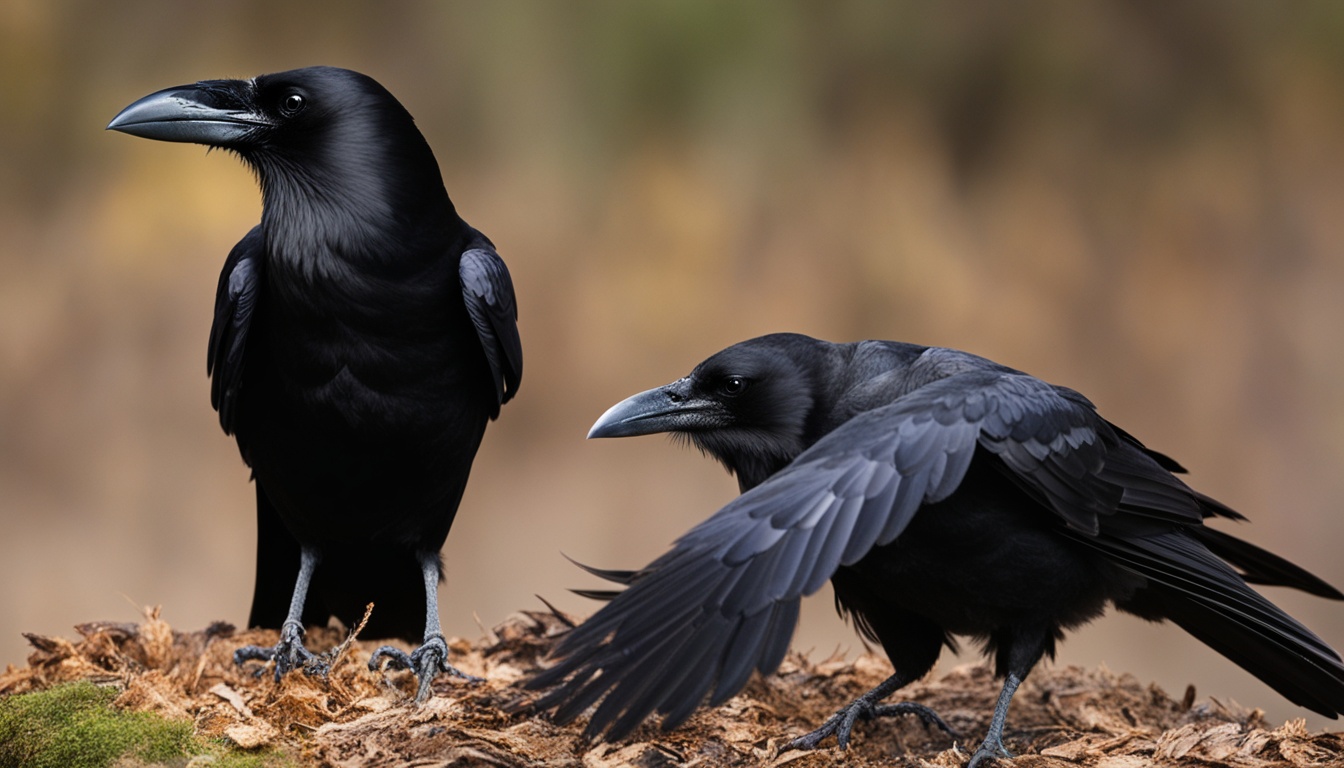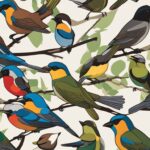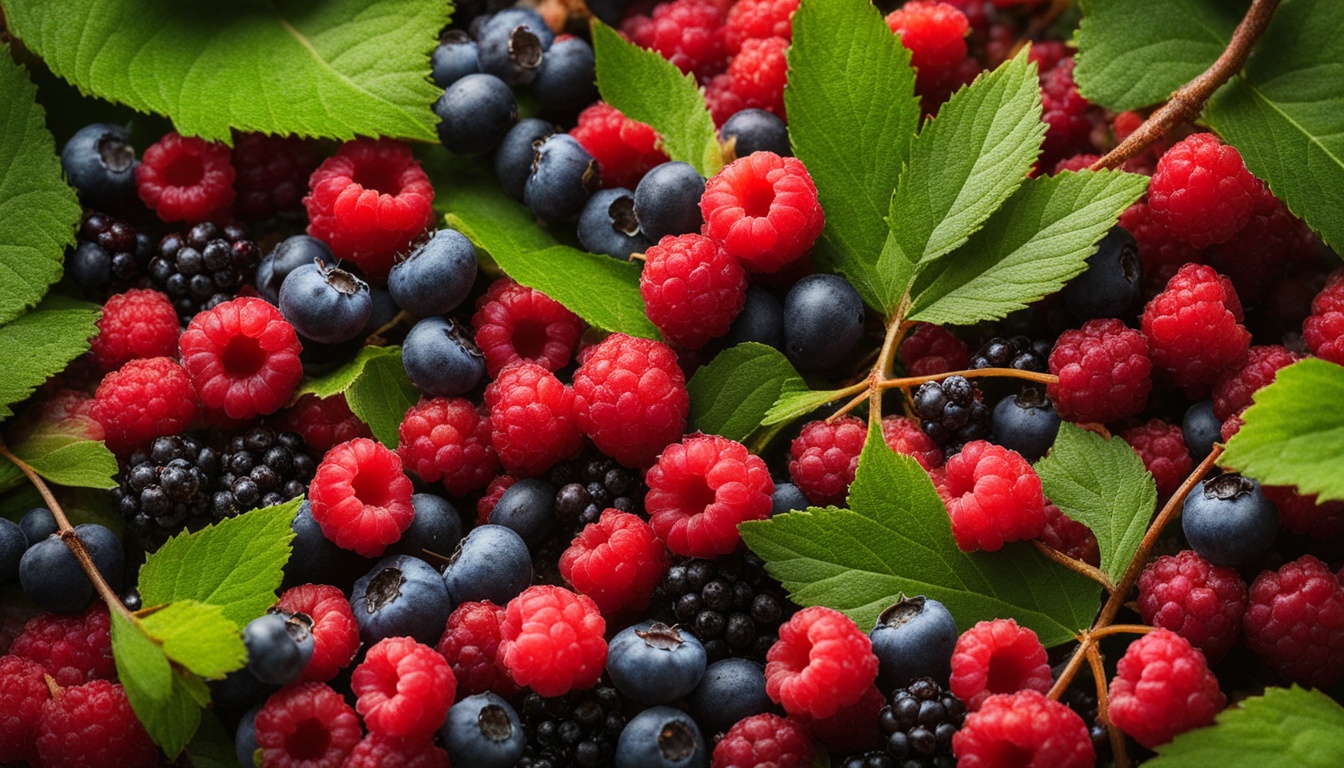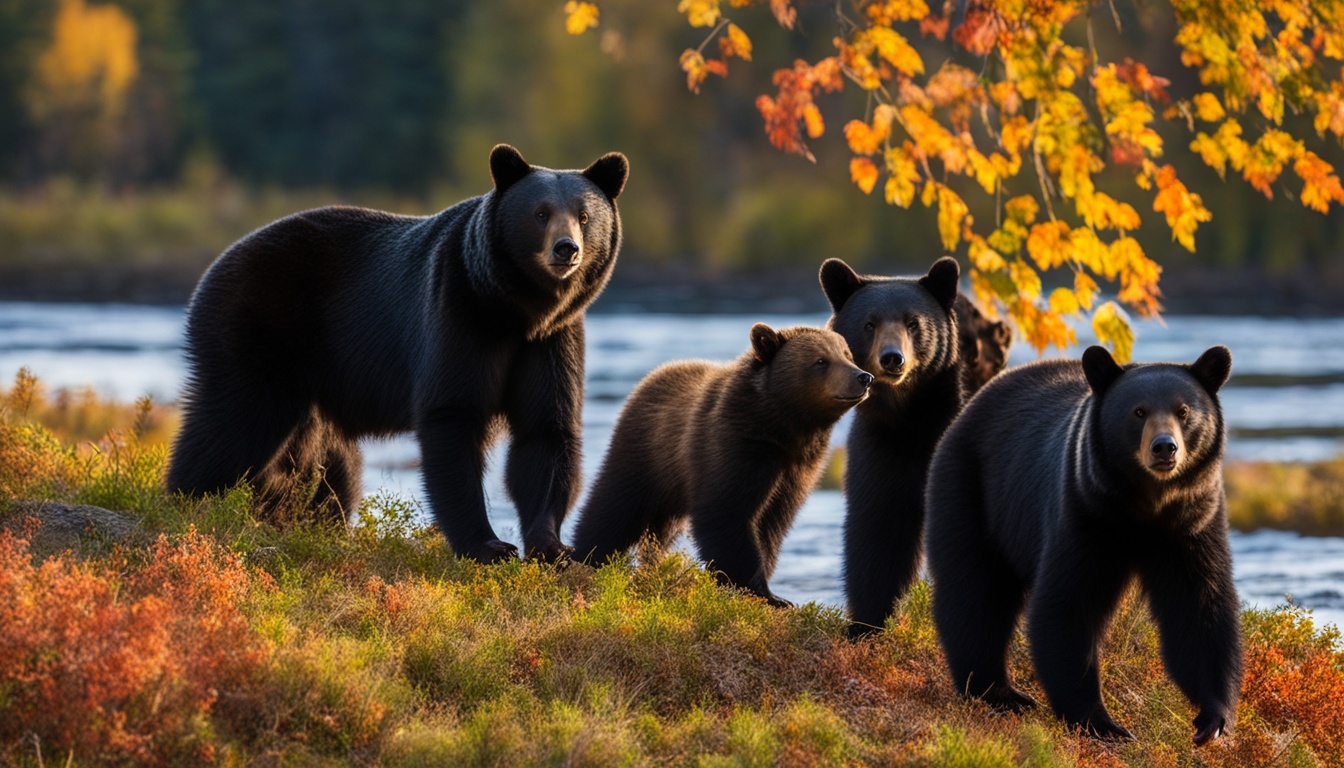Many bird lovers wonder how to tell ravens and crows apart. At first sight, they look very much alike. Yet, a few key features set them apart. These include their size, beak shape, tail form, and the sounds they make.
Ravens are bigger, as big as a Red-tailed Hawk. They have stronger, more noticeable beaks and rougher throat feathers. A raven’s tail is shaped like a wedge in flight, but a crow’s tail spreads out. In terms of sounds, crows caw while ravens let out a deep croak. By looking at these details, you can get good at spotting ravens versus crows.
Understanding Raven and Crow Size Differences
Ravens and crows differ significantly in size, making it easier to tell them apart. This difference is easy to see. It helps us know which bird we’re looking at. Watching for these size changes helps make identifying these birds more clear and interesting.
Size Comparison
Ravens are much bigger than crows. They can be up to 27 inches long, with a wingspan of up to 4 feet. This size is similar to a Red-tailed Hawk’s. Crows, on the other hand, are smaller. They average about 17 inches long and have a wingspan of 2.5 feet. Ravens also weigh more. They’re usually about 40 ounces, while crows are about 20 ounces.
Visual Identification by Size
When seen together, the size difference between ravens and crows is clear. Ravens are larger with bigger wings. This makes them stand out from the smaller, sleeker crows. So, seeing them in the air or on the ground can help us know which is which.
| Bird | Length | Wingspan | Weight |
|---|---|---|---|
| Raven | Up to 27 inches | Up to 4 feet | 40 ounces |
| Crow | Approx. 17 inches | Approx. 2.5 feet | 20 ounces |
Observing Beak Shape and Size
When trying to identify ravens and crows by beak, look closely. Ravens have a larger, curved beak with longer bristles at the base. This makes them different from crows, which have a slimmer beak.
Knowing how to identify corvid beaks is key. This skill is great for spotting them in the wild or in photos. The unique features of raven and crow beaks are like markers, helping to tell these birds apart.
| Beak Features | Ravens | Crows |
|---|---|---|
| Beak Size | Larger | Smaller |
| Beak Shape | Curved | Slimmer |
| Bristles at Base | Longer | Shorter |
Tail Shape as a Key Identifier
The tail shape is a key factor in telling crows and ravens apart. This is especially true when they are flying. Knowing the different tail shapes helps in correctly identifying each bird.
Fan-Shaped Tails in Crows
Crows are known for their fan-shaped tail feathers. Their tail feathers are all of the same length. When a crow flies, its tail looks like a fan or a circle. This round tail size is a clear clue that you’re looking at a crow, not a raven.
Wedge-Shaped Tails in Ravens
Ravens stand out with their wedge-shaped tails. Their tail feathers form a sharp wedge. This is because the outer feathers are shorter than the middle ones. When seen from below while flying, this wedge shape helps easily spot a raven.
Flight Characteristics: Raven vs Crow
To tell ravens and crows apart in the wild, look at how they fly. Both birds have their own unique way of moving through the sky. Ravens and crows show special flight behaviors that help us spot and identify them.
Ravens glide gracefully through the air, sometimes rising effortlessly with the help of warm air. They’re known for doing impressive flips and even flying upside down. This adds a touch of beauty and skill to their flights.
On the other hand, crows mostly flap their wings to fly rather than soaring. They might catch a gust of wind here and there to glide for a bit. Crows don’t show the same fancy moves as ravens do. They have a simpler way of flying that distinguishes them from afar.
The contrasting flight styles are illuminated in this comparison:
| Characteristic | Raven | Crow |
|---|---|---|
| Flight Behavior | Soaring with thermals, aerial acrobatics | Frequent flapping, occasional glides |
| Gliding Capability | Extensive | Limited |
| Aerial Tricks | Somersaults, flying upside down | Rarely |
Watching and learning these flight patterns helps in understanding corvid flight. Whether they’re gliding high or flapping fast, these ways of flying are key in telling ravens and crows apart. This is vital for spotting them accurately.
Telltale Signs in Vocalizations
Learning the sounds crows and ravens make helps you tell them apart. Each bird has its own unique sound. This lets you identify them quicker.
Crow Calls
Crows make loud, rough caws that we often hear in cities. These sounds are hard to miss. Beyond cawing, crows also use rattles, clicks, and clear notes. Typically, their calls are higher and more varied than raven calls.
Raven Calls
Ravens have deep, croaky voices that are distinct. In addition to croaking, they might make soft knocking sounds and even seem to perform vocally. These sounds are key in telling ravens apart from crows.
The way crows and ravens communicate is more than noise. It’s a big part of their behavior. By understanding their calls, bird watchers can spot these clever birds more easily.
Beak and Feather Traits Up Close
Studying the beak and feathers of ravens and crows closely offers key clues. These clues are vital for telling them apart accurately.
Raven’s Shaggier Throat Feathers
A raven’s ‘hackles’ are its shaggier throat feathers. They make the raven look rougher and more textured. This is a big help in knowing which bird is which. Ravens also fluff up these feathers sometimes, which makes this trait even clearer.
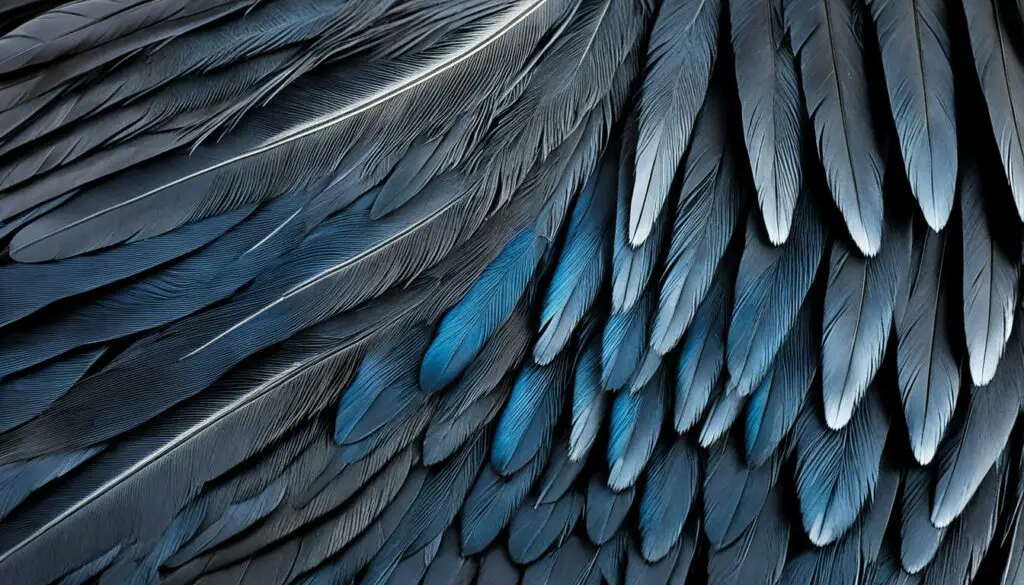
Differences in Beak Curvature
Ravens have much more curved and larger beaks than crows. This large, curved beak is strong and perfect for breaking and tearing. This makes it a stand-out marker for raven identification. In contrast, crows have sleeker, less elaborate beak shapes that stand out differently.
In conclusion, the unique features of ravens and crows’ beaks and feathers help us differentiate. Knowing these traits lets us distinguish between these amazing birds with confidence.
How do you tell the difference between a raven and a crow?
It can be tough to tell a raven from a crow, but not impossible with corvid identification tips. Focus on their size, beaks, and tails. Also, pay attention to how they fly and sound. This will help you know if it’s a raven or a crow.
Ravens are much bigger than crows. They also have a big, curved beak. In comparison, crows have a smaller, less noticeable beak. When flying, ravens have a wedged tail shape. However, crows’ tails are shaped like a fan.
Watch how they fly. Ravens love to glide on warm air and do tricks in the sky. Crows, instead, flap their wings a lot. Listening to their sounds is also helpful. Crows make a loud caw. But, ravens have a deeper, croaky call.
Here’s a quick list of what to look for:
- Size: Ravens are bigger.
- Beak Shape: Ravens’ beaks are curved, crows’ beaks are slim.
- Tail Shape: Look for a wedge shape for ravens, and a fan shape for crows.
- Flight Pattern: Ravens glide and do tricks. Crows just flap their wings.
- Vocalization: Ravens have deep croaks. Crows make harsh caws.
Knowing these differences will make spotting a raven or crow in the wild a fun challenge.
| Characteristic | Raven | Crow |
|---|---|---|
| Size | Larger | Smaller |
| Beak | Curved and robust | Slender |
| Tail | Wedge-shaped | Fan-shaped |
| Flight | Glides, performs acrobatics | Mostly flaps |
| Vocalization | Deeper croak | Harsh caw |
Using corvid identification tips enriches your understanding of these fascinating birds.
Behavioral Habits and Social Structures
Ravens and crows both belong to the corvid family and are very smart. However, they show different social behaviors. This makes them unique in their own ways.
Ravens Traveling in Pairs
Ravens are known to stick with one other raven, usually a mate. They travel, forage, and fly together. This shows their close pair bonds. Their choice to stay in pairs sets them apart from crows who like being in larger groups.
In the mating season, raven pairs work together closely. They build nests and care for their young. This further shows their strong bond as a couple.
Crows in Larger Groups
Crows, on the other hand, are more social. They form large groups, or ‘murders’, for company. This is very different from the raven’s solitary pairings.
Crows benefit from being in large flocks. They roost together for safety at night. This way, they protect each other and build stronger social connections. This behavior distinguishes them from ravens.
In urban environments, crows are known to form large groups at night for safety. This is a unique behavior not seen in ravens. These differences help in telling them apart when we see them. – BirdNote
The variety in corvid social structures highlights the unique nature of both ravens and crows. Their social habits help us recognize and appreciate them. It also shows their ability to adapt to different surroundings.
Geographical Distribution and Habitats
Knowing where ravens and crows live is key to spotting them. The Common Raven, for example, likes the wild more. It stays away from cities and chooses places like mountains and deserts.
On the other hand, the American Crow is everywhere. It does well in open spaces, farms, and cities. Crows are skilled at living near people, finding food and shelter easily.
Location is important too. In the Eastern United States, American Crows are seen more. Yet, out West, sightings can vary. Ravens can be found in the mountains and rural spots. But, crows are common in the suburbs and cities.
Looking at range maps can help a lot. These maps show you where each bird might be. This knowledge is great for birdwatching, whether you’re in a city or the wilderness.
Feeding Behaviors and Methods
Ravens and crows show different ways of finding food. Ravens work in pairs and enjoy hunting together. They are known to play when they have enough food, mixing fun with their foraging. This shows how clever and adaptable ravens are in finding food.
Raven’s Foraging Tactics
Ravens plan their meals more carefully than crows do. They stash food for when it’s needed, thanks to their excellent memory. Their ways of eating involve a lot of thinking, like breaking open tough nuts. This smart foraging makes ravens stand out in the wilderness.
Crow’s Feeding Patterns
Crows, however, look for food opportunistically and are often seen in large groups. They do well anywhere, especially in cities, due to their creative dining habits. Their clever tricks, like distracting to grab a meal, or using what people leave behind, make understanding crows fascinating.
Watching how ravens and crows eat helps us see what makes each of them special. They are both very smart, yet their feeding styles underline how differently they’ve adapted to their environments.

